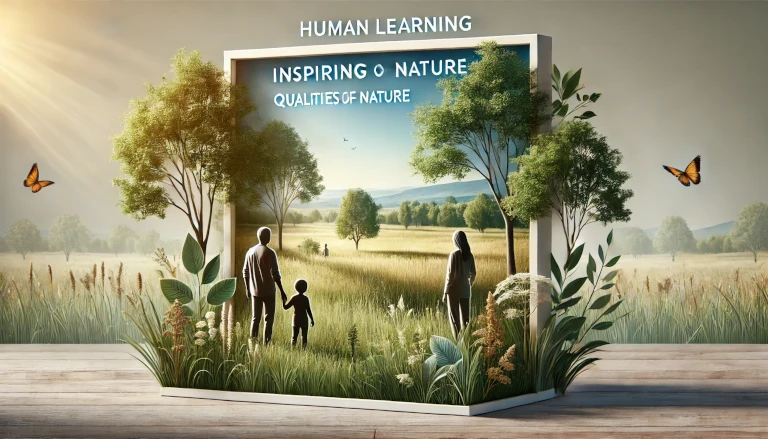Nature and learning are deeply connected, with research showing that time spent outdoors and exposure to natural environments positively affects cognitive development, creativity, and overall well-being. Learning outside of the traditional classroom opens up unique educational opportunities, promotes physical health, and reduces stress. As the world becomes more urbanized, integrating nature into learning is critical for holistic development.
What is Nature-Based Learning? 🌳
Nature-based learning refers to educational practices that incorporate natural environments, outdoor settings, and environmental education into teaching and learning activities. Instead of confining education to indoor classrooms, students learn through hands-on experiences in nature, such as observing ecosystems, studying wildlife, or engaging in outdoor projects. These experiences foster a deeper connection with the environment and enhance critical thinking.
Why is Nature Important for Learning? 🤔
Nature plays a pivotal role in enhancing the learning process by:
- Improving Cognitive Function: Nature stimulates cognitive development and boosts memory retention. Outdoor learning environments often result in more engagement and better understanding of complex concepts.
- Reducing Stress and Anxiety: Spending time in nature has a calming effect on the mind. It helps reduce stress levels and improves students’ focus and mental clarity, leading to a more productive learning experience.
- Promoting Physical Activity: Learning outdoors encourages physical movement, which has been shown to improve brain function, boost energy, and increase focus.
- Fostering Curiosity and Creativity: Nature naturally invites inquiry and curiosity. Students are more likely to explore, ask questions, and develop problem-solving skills in a dynamic outdoor environment.
How Does Nature Enhance Learning? 🌿
Nature-enhanced learning works by incorporating real-world contexts into the learning process. Here’s how nature-based education can be implemented:
- Outdoor Classrooms: Schools can create outdoor learning spaces where students interact with the environment while learning subjects like biology, geography, and environmental science.
- Field Trips: Regular visits to natural parks, forests, and wetlands allow students to study ecosystems and biodiversity up close, turning theoretical knowledge into practical understanding.
- Gardening Programs: School gardening programs help students learn about plant biology, food systems, and sustainability, offering hands-on experience with nature.
Where is Nature-Based Learning Most Effective? 🌍
Nature-based learning is especially effective in areas where:
- Green Spaces: Schools with access to gardens, parks, or forests can easily integrate nature into their curricula.
- Urban Settings: Even in densely populated urban areas, schools can create green roofs, outdoor gardens, or use community parks as learning environments.
When Should Nature-Based Learning Be Implemented? 📅
Nature-based learning can be implemented throughout the school year, but it is particularly beneficial during:
- Spring and Summer: Warmer weather provides the ideal opportunity for extended outdoor lessons, allowing students to engage with nature in more active ways.
- Stressful Periods: During exam seasons or intense study periods, nature-based activities can reduce stress and improve mental well-being.
How Much Does Nature-Based Learning Cost? 💰
Implementing nature-based learning doesn’t have to be expensive. Here’s a breakdown:
- Low-Cost Solutions: Schools can start small by incorporating outdoor activities into the existing curriculum. Outdoor field trips to local parks or nature centers are relatively inexpensive.
- Long-Term Investments: Schools with larger budgets can develop outdoor classrooms, build green roofs, or establish school gardens, all of which provide long-term benefits.
Advantages of Nature-Based Learning 🌟
- Holistic Development: Learning in nature helps develop social, emotional, and physical skills in addition to academic knowledge.
- Environmental Stewardship: Exposure to nature fosters a sense of responsibility toward the environment, encouraging students to become eco-conscious citizens.
- Improved Attention and Focus: Natural settings have been shown to improve attention spans and reduce symptoms of Attention Deficit Hyperactivity Disorder (ADHD).
Disadvantages and Challenges of Nature-Based Learning ⚖️
- Weather Dependency: Outdoor learning may be limited by extreme weather conditions, which can interrupt planned activities.
- Limited Access: Schools in highly urbanized areas may lack access to sufficient green spaces for nature-based activities.
- Curriculum Alignment: Some subjects may be harder to align with outdoor learning environments, requiring careful planning and creative approaches.
Cost Benefits of Nature-Based Learning 💸
While creating outdoor classrooms or green spaces might require an upfront investment, the long-term benefits include:
- Lowered healthcare costs due to improved mental and physical well-being,
- Increased student engagement leading to better academic performance,
- Environmental literacy that prepares students for future green careers.
Embracing Nature in Education 🌍🌱
Integrating nature into learning is not just about taking lessons outdoors but about fostering a deeper connection with the environment, which promotes both personal development and academic success. As we continue to grapple with issues like climate change and environmental degradation, nature-based learning can help create a generation of students who are more attuned to the world around them and equipped to tackle global challenges.
Nature-based learning improves cognitive skills, reduces stress, and fosters creativity. It’s an effective way to promote environmental awareness in education. 🌿
Read this in Marathi at निसर्ग आणि शिक्षण: मैदानी अनुभव शिक्षणाची गुणवत्ता कशी वाढवतात?
Discover more from Green Ecosystem - Renewable Energy, Agriculture, and Environmental Sustainability
Subscribe to get the latest posts sent to your email.


